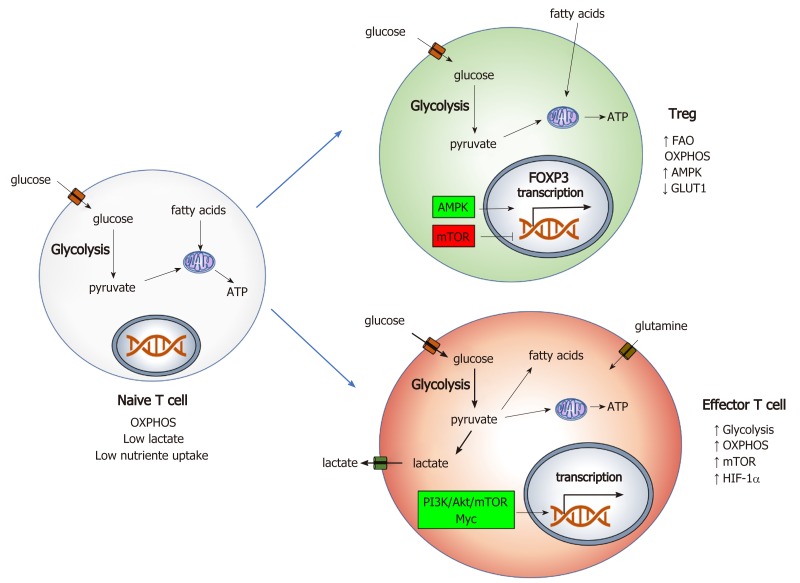Figure 2.
Main metabolic pathways in T cells – Naïve T cells are characterized by lower energy requirement, low glucose uptake and mainly use oxidative phosphorylation for energy generation. Once T cells are activated there is a switch in metabolic state which is accompanied by changes via the PI3K/Akt/mTOR axis and Myc. Increase in glycolysis and oxidative phosphorylation (OXPHOS) are characteristic in activated effector T cells, increase in glutamine uptake and fatty acid synthesis is also observed. In contrast, Tregs have metabolic features comparative to naïve T cells, producing energy by lipid oxidation and OXPHOS in mitochondria for the generation of adenosine triphosphate[7,42,43]. ATP: Adenosine triphosphate; AMPK: Adenosine monophosphate activated protein kinase; OXPHOS: Oxidative phosphorylation; FAO: Fatty acid oxidation.

